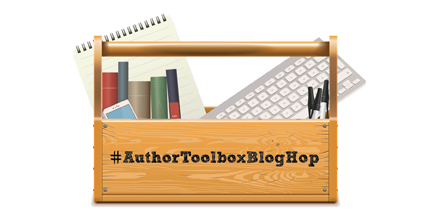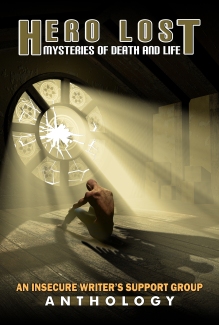Clearly Carve Your Dialogue #AuthorToolboxBlogHop #amwriting

The Author Toolbox Blog Hop is “a monthly blog hop on the theme of resources/learning for authors: posts related to the craft of writing, editing, querying, marketing, publishing, blogging tips for authors, reviews of author-related products, anything that an author would find helpful.” Want to jump into the writing tool box? Search #AuthorToolboxBlogHop or to join via blog, click here.
Thank you Raimey!
***

Overwriting dialogue is a difficult balance for me. I’m an over explainer. It’s something I learned as a mom. So when my editor mentioned streamlining my lines and tightening up some of the descriptive elements in my last submission, I picked up a great resource called How to Write Dazzling Dialogue, by James Scott Bell.
Today, I’m sharing a few fast tips on the art of “Compression.”
1. Watch for extra words in the beginning of dialogue lines. When we talk, we like to say, “Well, Like, Yes, No.”
These extra “fluff” words can often be cut. Unless there is some giant reason for the way the character talks, like in the case of a particular profession, dialogue does flow more smoothly, and I hadn’t thought of this point until the book showed me it’s effectiveness.
Example:
I pace the wall along the bedroom and stop short of my boyfriend Edward.
“Why do you always answer a question with a question?” I ask. “It’s so irritating.”
“I do? I mean, I guess it helps me think.” He steps backwards into the doorway.
“Well, stop.” I say. “I hate it.”
“What do you suggest I do?”
“Really? All I want is for you to be honest.” I cross my arms. “I’m done here.”
Thinner Example:
I pace the wall along the bedroom and stop short of my boyfriend Edward. “Why do you answer a question with a question?” I ask.
“I guess it helps me think.”
“I hate it.”
“What do you suggest I do?” He asks.
“Be honest.” I cross my arms. “I’m done.”
An exercise to help: Take a current piece of dialogue and make a second version. Cut it to the bone. Read it. See which one shines
2. Description elements in dialogue determine the pace.
Scott mentions two ways to write dialogue, either with white space or descriptive element scattered in dialogue.
The reason to cut dialogue description is pace. If you need to speed up things, cut the description to add more white space. If you need to slow it down, add more of it.
Example:
I stand in the doorway staring at Dylan; my heart hammers a million miles an hour.
“You’re really here,” I say, stepping back until I meet the wall.
“Did you plan to forget me?” Dylan asks, brow lifted.
Heat hit my cheeks. “You did that for me, remember?”
He drops his chin, his gentle gaze locks with mine, “For what it’s worth, I’m sorry.”
I fidget with the hem on my dress. “I forgive you, but I won’t forget.”
The thinner version:
I stand in the doorway staring at Dylan; my heart hammers a million miles an hour as I say, “You’re really here.”
“Did you plan to forget me?”
“You did that for me, remember?”
He drops his chin, his gentle gaze locks with mine, “For what it’s worth, I’m sorry.”
“I forgive you, but I won’t forget.
As I read on, I came across this perfect line and my editor’s comments clicked, “Use dialogue like an orchestra leader’s baton. Slow down, speed up, make music,” (Page 88).
3. Proofread your dialogue for common punctuation mistakes.
One mistake I used to make, was capitalizing “He said” or “She said” after the dialogue. Yikes!
4. One major tip is where to put the attribution. Bell suggests to add it before or after the first complete phrase.
Example of what works:
Tonya said, “Keep your voice down. You don’t want to wake the baby.”
Or this:
“Keep your voice down,” Tonya said. “You don’t want to wake the baby.
Not this:
“Keep your voice down. You don’t want to wake the baby,” Tonya said. Action beats and dialogue attributes should both be used.
5. Action beats create the picture for the reader.
Too much of this creates hurdles in clarity. Bell suggests action beats work best when they enhance what the character is feeling and add to the scene.
Question: Any other fantastic dialogue tips? I’d love to hear them. Happy Hop Day 🙂
Posted on September 17, 2019, in Uncategorized. Bookmark the permalink. 26 Comments.




Great dialogue tips.
Dialogue is one of my favourite aspects of writing. Great post with great points.
Great tips and exercises 🙂
I love dialogue but I get the feeling my characters talk too much, and I often use too much description!
Excellent tips.
Banter between two characters should always be short and dump most dialogue tags. Then it will read rapid fire, just the way it would be delivered if spoken.
Busting up the dialogue with the tag in the middle is something so simple I had been missing in my first few stories. I still add fluff, but when I’m reading yours, I liked the first example. LOL. A lot would depend on the scene too. If it was a fight, I’d want a faster pace- a conversation over wine, I might slow it down. Reading it out loud helps a lot.
Very true! The scene should reflect the pace of how fast the conversation unfolds 🙂
These are great examples. Like you, I’m an over-explainer, too. Thanks for sharing.
Great post! I like James Scott Bell, but haven’t read this book yet. I’ll have to check it out. Thanks for sharing. 🙂
Some very helpful tips here! I love what your editor said about using dialogue like an orchestra leader’s baton: Slow down, speed up, make music. This statement couldn’t be more true and, in fact, can be related to all writing in a novel – not just dialogue. One thing I always find particularly troubling when critiquing someone’s work is when it lacks rhythm. It’s very apparent in dialogue especially. If you don’t have rhythm, the whole conversation falls flat. Great post! Thanks for sharing.
I appreciate you stopping in Brigitte 🙂
I’m always happy to see another writer recommending James Scott Bell. I love his books on writing. His tips are so easy to digest and apply. I find that #1 is still something I struggle with, as even in my normal life writing emails and such, I tend to write exactly as I speak. Your examples were spot on and very helpful. Great post!
Thank you Christy. I love the book 🙂
Emotional reactions, drive dialogue. Not stage direction. Your examples captured that perfectly. 🙂
Anna from elements of emaginette
Thank you Anna 🙂
That’s a really great list, Erika. I sometimes see a lot of fluff sentences – exchanges that are long and don’t add to the story. Those can also be pared down or eliminated.
Thank you for your tip Diane. I read about that too. 🙂
Thank you for sharing these tips, Erika! What you say about pacing is so true – I hadn’t thought about it in that way before.
I love examples. I think I do it like you recommend most of the time.
Susan Says
Thank you so much Susan 🙂
Thanks for this. A great resource. When I’m editing manuscripts, I see so many of these issues with dialogue on a daily basis.
Way to walk us through this like a pro, Erika! #amsharing 🙂
Dialogue is usually one of my favourite things to write so thank you for these tips and examples.
I’m going to keep this handy. Dialogue is so tricky and these are easy to understand examples to use as a filter. Thank you!
Good tips here from the master, Erika. Thanks so much for the refresher. As writers, we always need refreshers.
Just like narration or description, dialogue needs to move the story action forward. That’s why we trim the boring stuff and keep the dialogue crisp and moving forward. All best to you!
Thank you Victoria 😊
Good ideas to remember. Dialogue can be so powerful, but it is easy to become too wordy. Thanks.